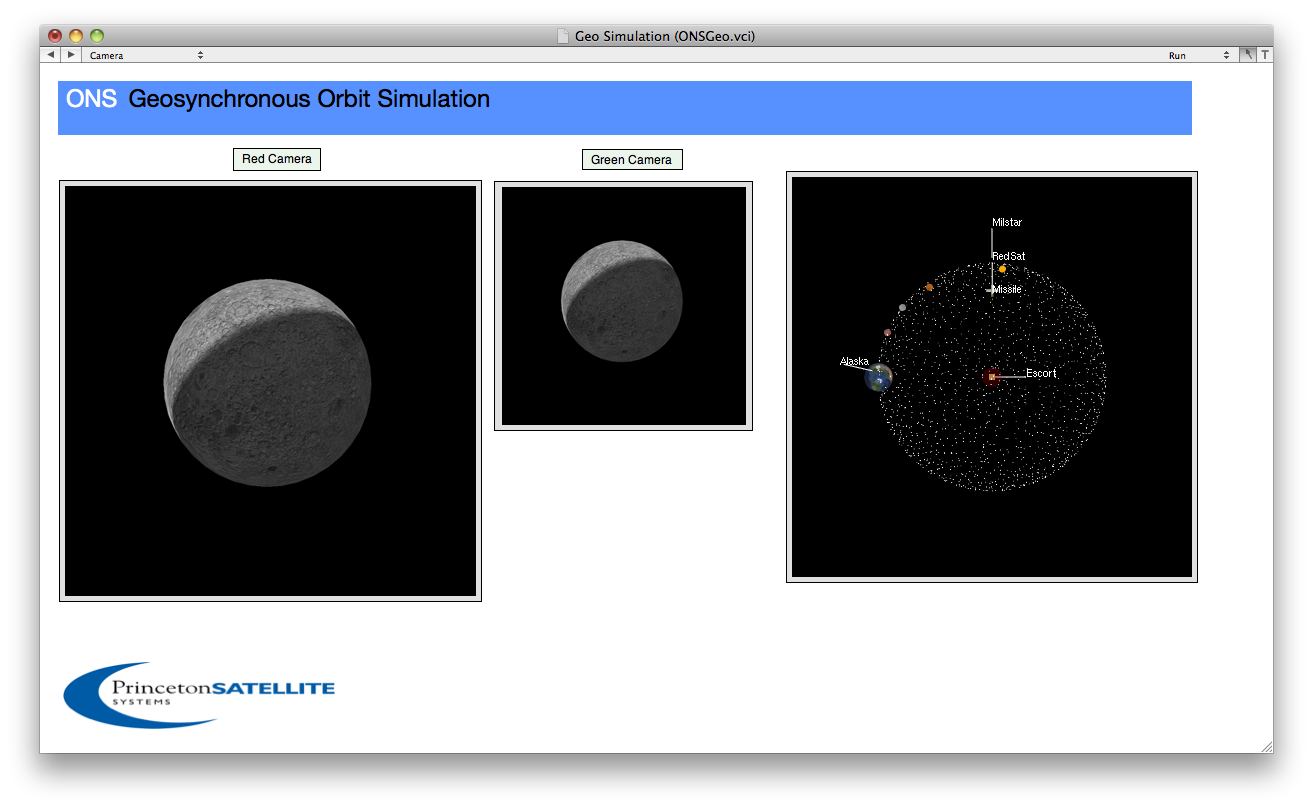
|
SUPPORT SITE |
|
The Optical Navigation bundle incorporates a new navigation solution developed for the NASA Phase II SBIR, entitled "Optical Navigation System" (ONS).
ONS v1.0 is available under SBIR Data Rights at no cost to U.S. Government agencies. Download the ONS v1.0 User's Guide.

The Optical Navigation System (ONS) is a flexible navigation system for deep space operations that does not require GPS measurements. The navigation solution is computed using an Unscented Kalman Filter (UKF) that can accept any combination of range, range-rate, planet chordwidth, landmark and angle measurements using any celestial object. The UKF employs a full nonlinear dynamical model of the orbit including gravity models and disturbance models. The ONS package also includes attitude determination algorithms using the UKF algorithm with the Inertial Measurement Unit (IMU). This makes the sensor a more capable plug-in replacement for a star tracker, thus reducing the integration and test cost of adding this sensor to a spacecraft. The IMU is used as the dynamical base for the attitude determination algorithms. That is, the gyro model is propagated, not the spacecraft model. The linear accelerometers are used to measure forces on the spacecraft. This permits accurate measurement of the accelerations applied by thrusters during maneuvers.
The integrated sensor has two independently gimbaled telescopes each with a zoom lens. The zoom allows planetary targets to be imaged accurately from larger distances. The focal plane of each telescope uses a single Active Pixel Sensor (APS) such as the Cypress Star 1000 Complementary Metal Oxide Semiconductor (CMOS) sensor. These are used to measure the chordwidth of planets, moons or the sun; angles between landmarks; angles between planets; and angles to stars. Angles between centroids are used for planetary targets. The centroid can be measured using only part of the planetary disk.
The focal length is adjusted and telescope angles are changed using ultrasonic motors. Ultrasonic motors provide very high accuracies and are capable of adjusting the focal length to nanometer precision. In addition, they have large holding torques and forces so they do not require any caging mechanisms for launch. The sensor has a built-in BAE RAD750 processor which does all navigation processing. The processor is on a 3U board which includes built in SpaceWire which is used for internal and external data transfer. SpaceWire is being used on GOES-R, the James Webb Space Telescope and the Lunar Reconnaissance Orbiter.
The following optical measurements can be used for navigation in the Optical Navigation System:
Attitude determination is done with both cameras. Consequently the quaternion between the telescopes is known to high precision. The measurements from the gimbals are used as a measurement input to the Kalman Filter and as a check for fault detection.
A feature of the sensor is that it can be pointed at targets mounted on the spacecraft for calibration. Camera intrinsic and extrinsic parameters are measured using a calibration cube with a checkerboard pattern. The imaging chip is calibrated with a light source. This allows the sensor to be re-calibrated after launch. Aberrations can be measured and corrected. The response of the pixels across the frame can also be measured allowing for the use of intensity. Calibration, batch orbit determination and targeting run in background. The targeting algorithms decide on the next camera targets based on a combination of geometric and measurement error. The targeting algorithm will attempt to find a target, and target type, that improves the solution the most. Improvement is defined as producing a solution that is most likely to improve the accuracy of the next orbit adjustment.
The Optical Navigation System is particularly well suited to advanced missions that require continuous navigation updates. Such missions include solar sail missions and spacecraft propelled by low thrust engines. Other applications would include satellites that cannot rely on GPS or other external sources of navigation information.
Spacecraft approaching Pluto.